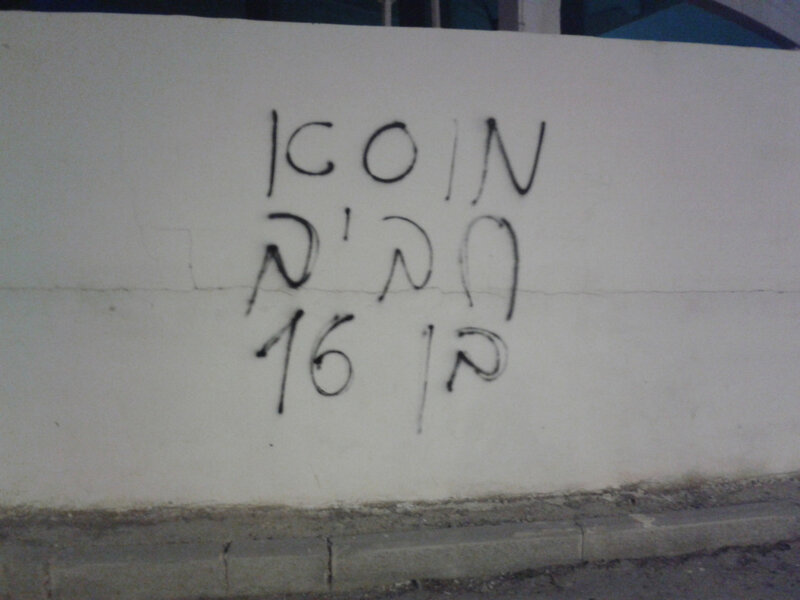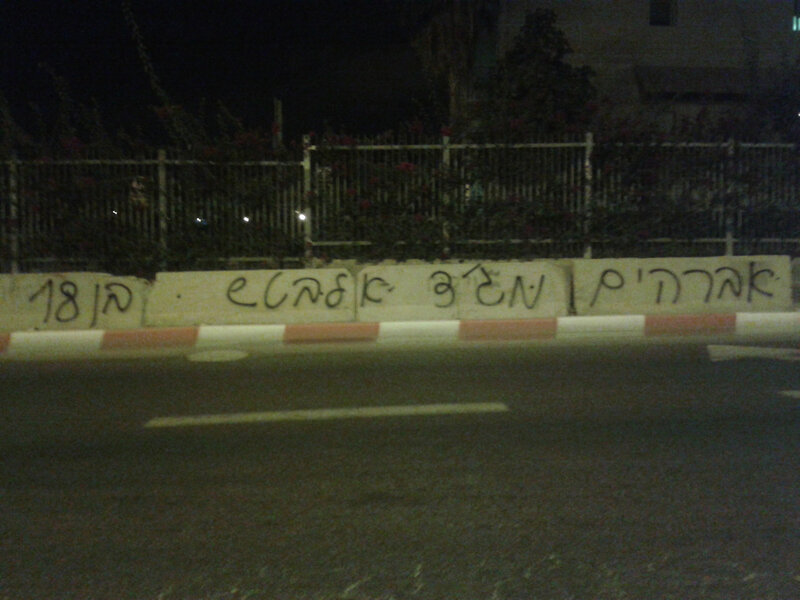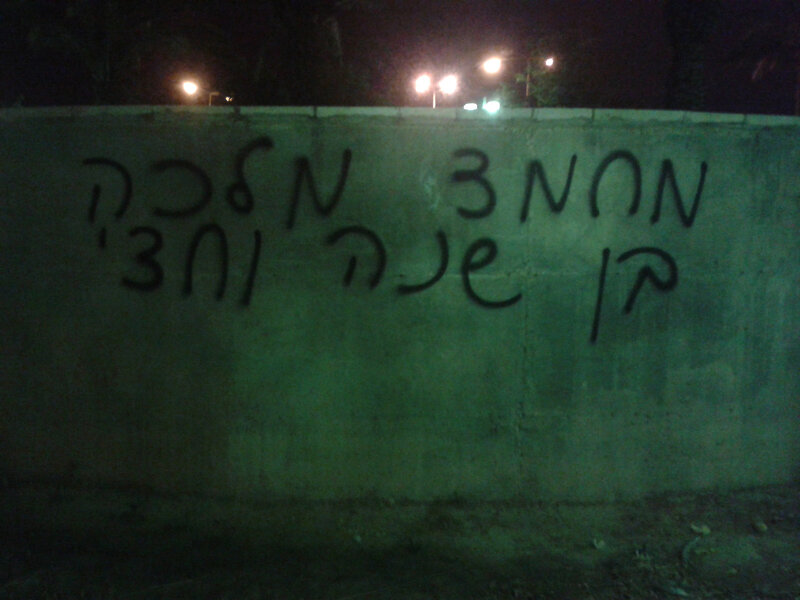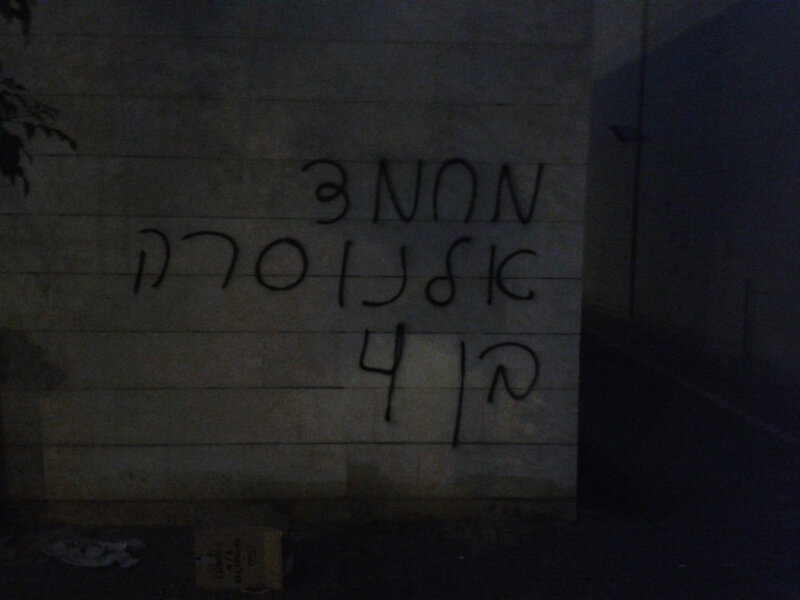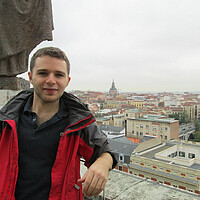Israelis scrawl the names of the Gaza dead on their city walls
Loading...
Inscribed on a concrete barrier off a quiet residential street, the graffiti reads "Dunya Mahdi Hamad, aged 16." But Dunya did not not write her own name.
Neither did Mohammed. ("Mohammed Khalaf Al-Nawasra, aged 4"). Nor Hana ("Hana Malakiyeh, aged 27"), nor her son ("Mohammed Malakiyeh, aged 18 months.")
A group of Israelis have chosen to commemorate the dead in the latest Gaza conflict by spray painting surfaces in the southern city of Beersheva with biographical details of name and age. The names of the Gaza dead now appear across many neighborhoods in this desert Israeli town.
As of Wednesday, more than 200 Palestinians and 1 Israeli had died in the latest Gaza violence. Nearly 80 percent of the Palestinian dead are civilians, the United Nations reported, with many female and youth casualties. At the same time, millions of Israelis have been forced to huddle in bomb shelters in fear of more than 1,000 incoming Hamas rockets.
The goal of the anonymous left-leaning Israelis is to remind the Israeli public of the growing death toll in Gaza. According to the Tumblr blog profiling the graffiti, names on walls:
I’m not sure if the people who will see this on the street will know that this is a name of young woman who was killed in Gaza. I hope someone will pass by and think by mistake that a girl called Dunya Mahdi Hamad walked along this street at four in the morning on the night between Friday and Saturday, spray painted her name and added her age.
The blog links to lists in English and Hebrew of the names and ages of the Palestinians killed in this latest round of violence. The unknown Israeli artists are graffitiing the names in an effort to change the anonymous nature of those killed.
"All too often, casualties on both sides of this conflict are remembered only as numbers. This post is a reminder that each one has a name," writes the leftist Israeli publication, +972 Magazine, which also tabulated the names of the Palestinian and Israeli dead.
The left-leaning Israeli Ha-makom news site writes, "A new blog documents the work of an anonymous artist and reminds us what we really want to forget," and labels it "the memorial wall."
The method of protest resembles the Israeli right-wing "price tag" graffiti that attempts to demonstrate that there is a cost for Israeli government policies seen as undermining Israeli settlement in the West Bank. The blog also echoes The New York Times 9/11 victims list, "Portraits of Grief."
The artists are unknown and as of press time, they did not respond to media inquiries. According to Ha-makom:
.




